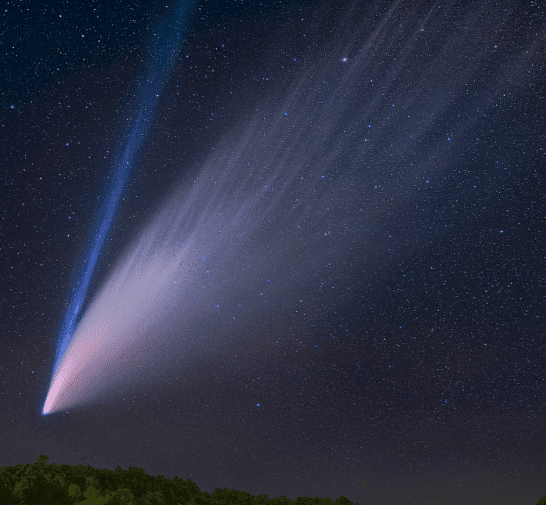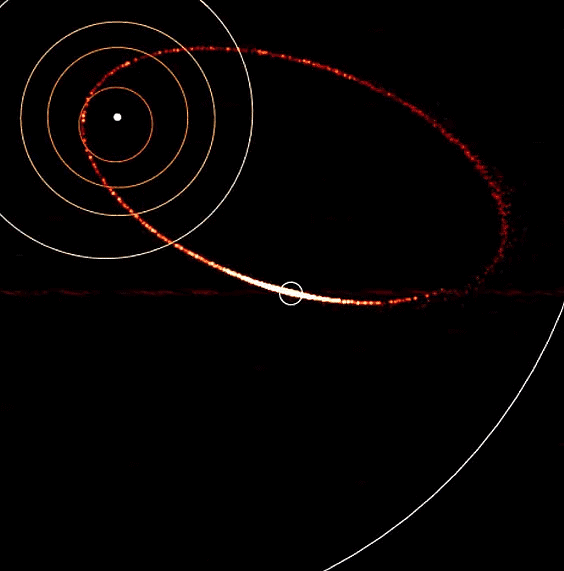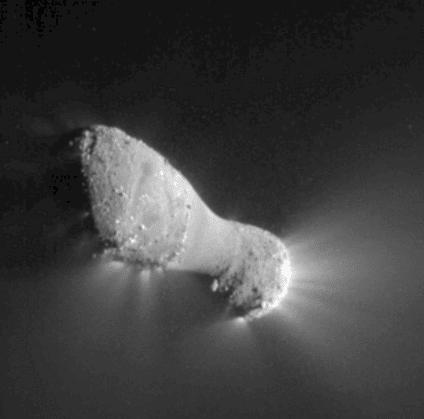ACT Exam > ACT Notes > Science for ACT > What is a Comet
What is a Comet | Science for ACT PDF Download
Introduction
Comets are large objects made of dust and ice that orbit the Sun. Best known for their long, streaming tails, these ancient objects are leftovers from the formation of the solar system 4.6 billion years ago.

Where do comets originate from?
- Comets primarily inhabit the outer regions of the solar system. Some are situated within a broad disk located beyond Neptune's orbit, known as the Kuiper Belt. These comets, referred to as short-period comets, complete their orbits around the Sun in less than 200 years.
- Other comets reside in the Oort Cloud, a spherical region at the outer fringes of the solar system, approximately 50 times farther from the Sun than the Kuiper Belt. Termed long-period comets, these celestial bodies require significantly more time to complete their orbits around the Sun. In fact, the comet with the lengthiest known orbit takes over 250,000 years to complete a single revolution around our star!
How do comets approach Earth for observation?
- The gravitational influence exerted by a planet or star can perturb comets from their original locations within the Kuiper Belt or Oort Cloud. This gravitational tug alters the trajectory of a comet, redirecting it towards the vicinity of the Sun. The resulting orbits of these redirected comets often resemble elongated ovals.
- As the comet accelerates towards the Sun due to gravitational forces, it traverses a path that takes it behind the Sun before returning towards its point of origin. Some comets may plunge directly into the Sun, rendering them invisible thereafter. It is during the comet's passage through the inner solar system, whether inbound or outbound, that we have the opportunity to observe it in our skies.

What comprises a comet?
- At the core of each comet lies a solid, frozen nucleus known as the nucleus. Typically measuring less than 10 miles (16 kilometers) across—approximately the size of a small town—this amalgamation of dust and ice constitutes the fundamental structure of a comet. While comets dwell within the Kuiper Belt or Oort Cloud, scientists posit that their composition primarily comprises these frozen nuclei.
- However, as a comet approaches proximity to the Sun, it undergoes a process of heating. Gradually, the ice within the nucleus begins to sublime, transitioning into gas. This sublimation process can trigger the ejection of gas jets from the comet, carrying dust particles along. The interplay between gas and dust generates an expansive, nebulous envelope surrounding the nucleus, aptly termed the coma.
What causes comets to develop tails?
- The emergence of tails on comets is attributed to the outflow of dust and gases from the nucleus. As these materials disperse, the pressure exerted by sunlight and solar particles propels them into elongated tails that extend millions of miles behind the comet.
- Upon closer examination, astronomers discern that comets exhibit two distinct tails. One appears white and consists of dust particles, tracing a broad, gently arcing trajectory in the wake of the comet. Conversely, the other tail appears bluish and comprises electrically charged gas molecules, or ions. Remarkably, the ion tail consistently aligns itself in a direction directly away from the Sun.

How do we gather information about comets?
- The fascination with comets has spanned millennia, yet obtaining a clear view of a comet nucleus from Earth has proven challenging due to the obscuring presence of the coma's gas and dust. However, recent advancements in space exploration have afforded several spacecraft the opportunity to conduct close-up studies of comets.
- NASA's Stardust mission, for instance, embarked on a journey to Comet Wild 2 (pronounced like "Vilt two"), collecting samples and returning them to Earth. Analysis of these particles revealed a wealth of hydrocarbons, considered the fundamental "building blocks" of life.
- Similarly, the European Space Agency's Rosetta mission, equipped with numerous NASA instruments, closely scrutinized Comet 67P Churyumov-Gerasimenko. Rosetta deployed a lander onto the comet's nucleus and proceeded to orbit the celestial body for two years. During its mission, Rosetta detected life's building blocks on the comet and provided imagery revealing Comet 67P's rugged terrain, shaped by extensive surface activity.

The document What is a Comet | Science for ACT is a part of the ACT Course Science for ACT.
All you need of ACT at this link: ACT
|
485 videos|520 docs|337 tests
|
Related Searches
















